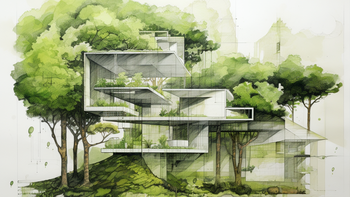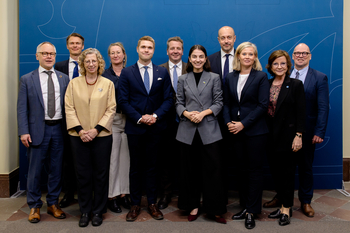Highlights from the Nordic Pavilion at COP28

From the Nordic and global climate stocktake to innovative financing of loss and damage. From the challenges of climate adaptation to securing young people’s involvement in decision-making. From culture’s importance to the green transition to the long-overdue inclusion on the agenda of food systems’ climate impact. Dive into some highlights from the stage in the Nordic Pavilion at COP28.
Where do we stand?
In the pavilion, we presented several reports on the current status of the Nordic Region – and the world – in a range of key areas.
We discussed the main conclusions from the UNEP Emissions Gap Report 2023 and the subsequent Nordic Stocktake report. These reports provided insight into the global situation, as well as challenges specific to the Nordic Region. Perhaps just as importantly, the pavilion hosted a positive debate about the need to present attractive visions of a climate-neutral society. What do we want life to look like in 2050?
We also presented and discussed the scenarios described in the World Energy Outlook, published by the International Energy Agency (IEA). This key report for the energy sector set the scene for a wide range of energy-related events in the pavilion.
Also on the agenda were the less-than-positive results of UNEP Adaptation Gap Report 2023, under the header “Underfunded and unprepared”. Representatives of Nordic co-operation then shared real-life experiences of adaptation efforts aimed at making cities and coastal areas more resilient to extreme weather phenomena. How can research and legislators work together at local and national level to create the most effective climate adaptation policies?
Loss & Damage
The operationalisation of the fund for loss and damage was a major theme at COP28 and in the Nordic Pavilion. Remarkably, the fund was agreed on the very first day of negotiations, after which several countries announced their contributions.
A panel consisting of members of the Transition Committee, which devised the proposal for the operationalisation, presented and discussed a report on innovative sources of financing and the mobilisation of funds for loss and damage. The report was commissioned by the Nordic Council of Ministers and drawn up by Wenger Law. As Ole Thonke, Denmark’s Undersecretary for Development Policy, noted from the stage: “Funding from traditional public sources is not sufficient to bridge the financial gap we face. We need to look at innovative options.”
Young people’s voices were once again heard on the Nordic stage, with 14 events organised by Nordic and global youth groups. As a new feature this year, we asked the Nordic UN Youth Delegates to invite inspirational guests to our stage to participate in personal, in-depth discussions. Under the “Nordic Talks” heading, the pavilion hosted six moving conversations on everything from climate anxiety to mobilisation to tangible outcomes, such as the #JusticeforRosa movement that helped establish the EU Day for Climate Victims on 15 June.
Cultural life is a catalyst for the green transition
This year, we also strongly emphasised the important role of the cultural sector in a successful green transition. Daily screenings of the Greenlandic artist and poet Jessie Kleemann’s work Arctic Pain, as well as two panel debates on the need for critical and independent journalism and the place and role of culture in the climate debate, highlighted the inherent power of art and culture to create understanding and foster real change.
Food systems takeover
COP28 was the year when the food system was finally put on the climate agenda. The Nordic Region has been pushing for this for a long time, including via the “food systems takeovers” at the COP Nordic Pavilion in the last two years. Our food system accounts for approximately one-third of the world’s emissions, which makes climate change and food systems closely interlinked, and both require coordinated global action.
Climate policy is also gender-equality policy
Gender equality and climate policy are inextricably linked. This was emphasised strongly at COP27 when the Nordic Region hosted a fringe event in collaboration with the African Union and UN Women. This year, we launched the Nordic Knowledge Hub on Gender and Climate, which brings together the latest research on the crucial importance of pursuing gender equality in climate policy. The panel also discussed gender-equality challenges associated with a green labour market. Only one in three people employed in the green sector in the Nordic Region is a woman, while men traditionally dominate CO2-intensive industries such as transport, energy, agriculture and construction. The transformation of these industries will, therefore, have a significant impact on men’s working lives.



